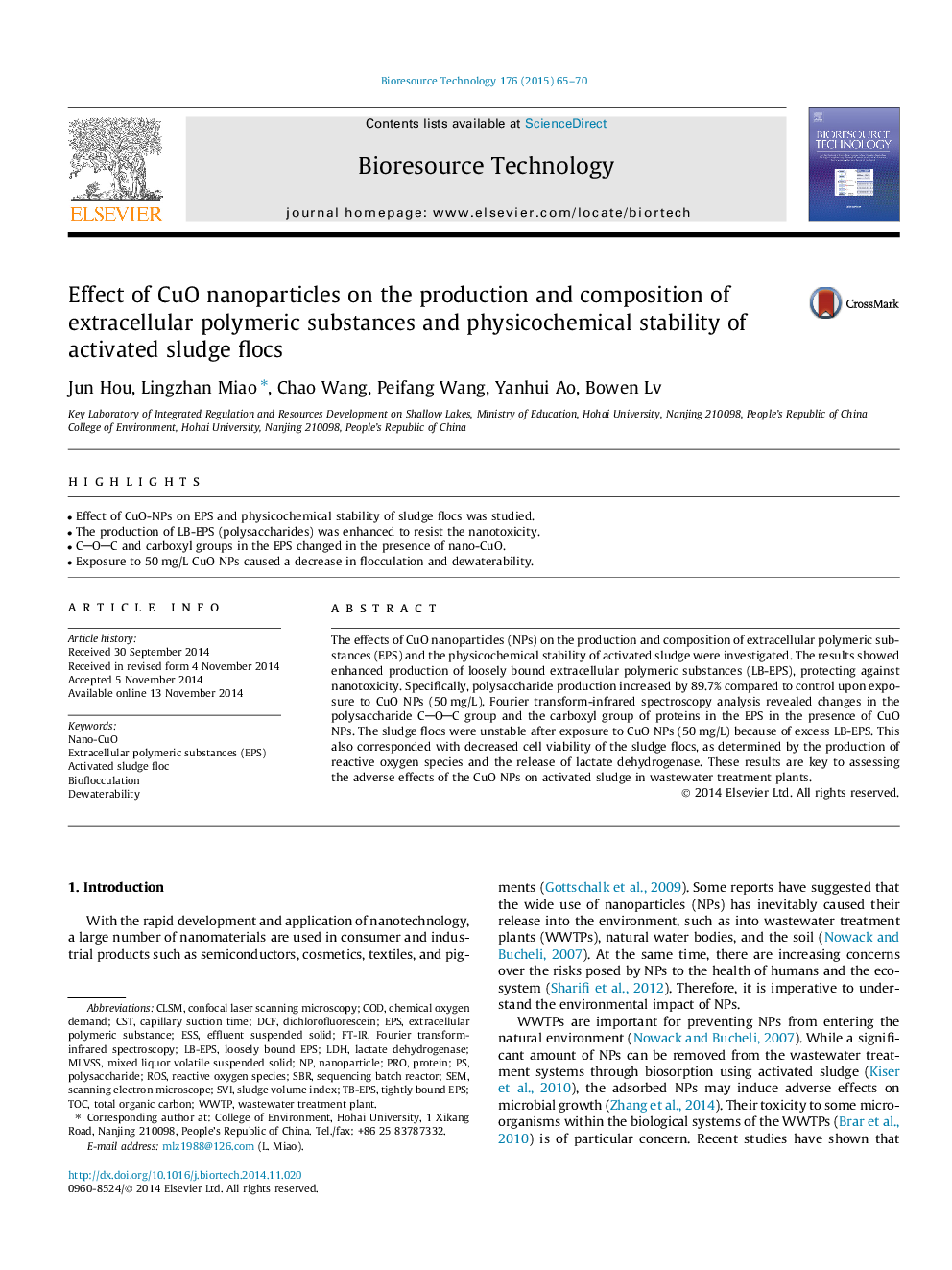| Article ID | Journal | Published Year | Pages | File Type |
|---|---|---|---|---|
| 7075306 | Bioresource Technology | 2015 | 6 Pages |
Abstract
The effects of CuO nanoparticles (NPs) on the production and composition of extracellular polymeric substances (EPS) and the physicochemical stability of activated sludge were investigated. The results showed enhanced production of loosely bound extracellular polymeric substances (LB-EPS), protecting against nanotoxicity. Specifically, polysaccharide production increased by 89.7% compared to control upon exposure to CuO NPs (50Â mg/L). Fourier transform-infrared spectroscopy analysis revealed changes in the polysaccharide COC group and the carboxyl group of proteins in the EPS in the presence of CuO NPs. The sludge flocs were unstable after exposure to CuO NPs (50Â mg/L) because of excess LB-EPS. This also corresponded with decreased cell viability of the sludge flocs, as determined by the production of reactive oxygen species and the release of lactate dehydrogenase. These results are key to assessing the adverse effects of the CuO NPs on activated sludge in wastewater treatment plants.
Keywords
ESSDcfEPSSBRMLVSSTOCCLSMLB-EPSWWTPTB-EPSdichlorofluoresceinNano-CuOSVICStROSDewaterabilityBioflocculationFourier transform-infrared spectroscopyWastewater treatment plantchemical oxygen demandSequencing batch reactorcapillary suction timeSludge volume indexFT-IRlactate dehydrogenaseLDHActivated sludge flocExtracellular polymeric substancemixed liquor volatile suspended solidSEMExtracellular polymeric substances (EPS)scanning electron microscopeconfocal laser scanning microscopyNanoparticlePROProteinPolysaccharideCodTotal organic carbonReactive oxygen species
Related Topics
Physical Sciences and Engineering
Chemical Engineering
Process Chemistry and Technology
Authors
Jun Hou, Lingzhan Miao, Chao Wang, Peifang Wang, Yanhui Ao, Bowen Lv,
